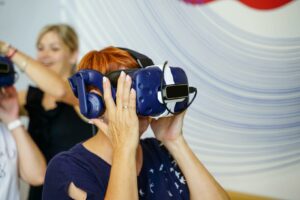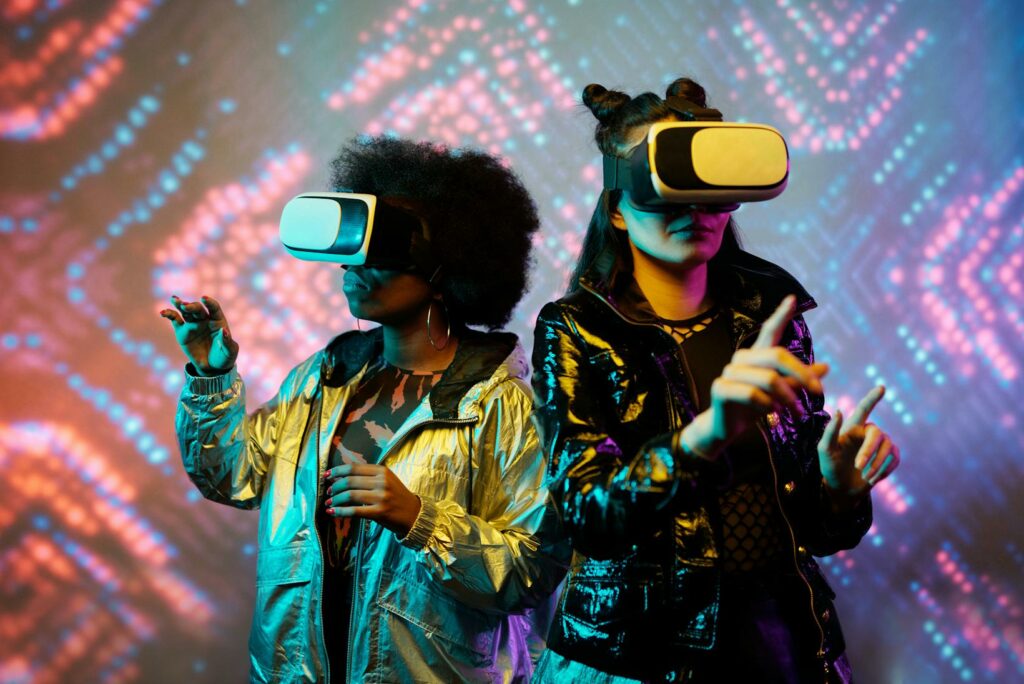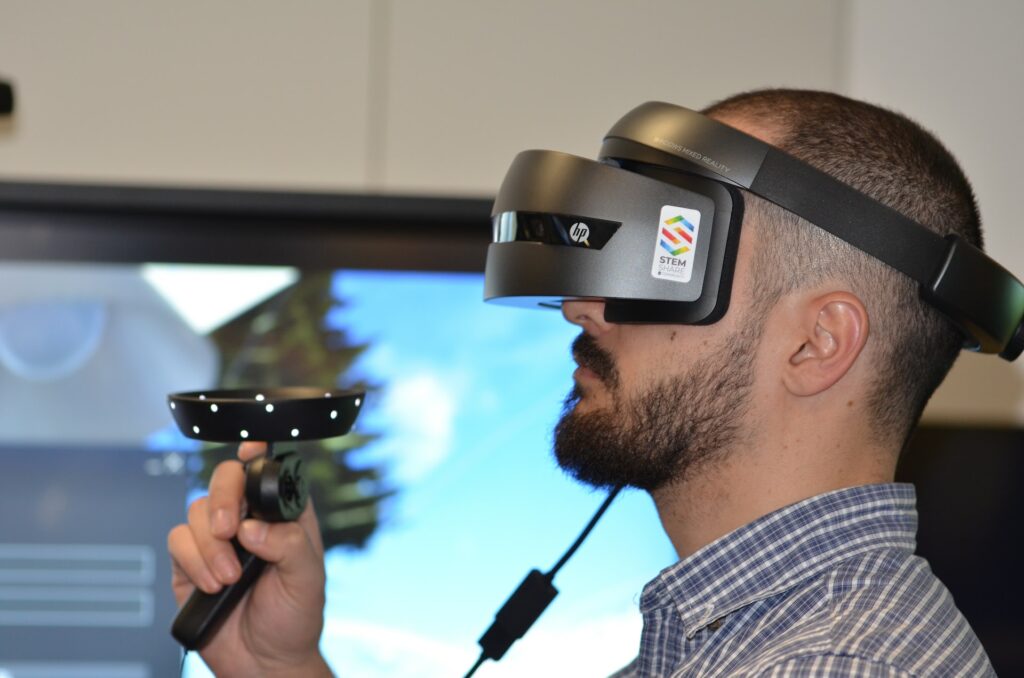Immerse yourself in the captivating universe of virtual reality (VR). It’s not just about gaming; this cutting-edge technology has infiltrated a variety of sectors, revolutionizing the way we interact with digital environments. From healthcare to real estate, VR is transforming industries and our everyday lives.
This article will explore the fascinating world of VR, highlighting examples of its innovative applications. We’ll delve into how these technologies are not only entertaining us but also solving real-world problems. So, strap on your VR headset and prepare for an exciting journey into the realm of the virtually real.
Virtual Reality Technology Examples
As the segment of virtual reality technology expands, innovative products generate immersive experiences that captivate audiences. Let’s explore some of these top-notch virtual reality technology examples.
High-End Virtual Reality Headsets

Oculus Rift remains a popular name, presenting users with a gaming-focused VR experience. Equipped with a 2160×1200 resolution, it offers a 110-degree field of view, transporting users to lifelike virtual recreations. Another noteworthy contender, HTC Vive, promises incomparable room-scale VR, incorporating precision tracking and advanced touch controllers. This headset’s unique selling point hinges on its vast content ecosystem aligned to SteamVR, a celebrated gaming and software platform. Then, there’s the Valve Index. Known for its high-fidelity virtual interface, it features a 130-degree field of view and a 144Hz refresh rate; it pushes the boundaries of visual and haptic feedback, enhancing user immersion.
These examples aren’t the be-all and end-all of high-end VR headsets, but highlight just how far this technology has come. Each delivers an immersive VR experience, albeit with varying specifications, price points, and intended user groups.
Mid-Range Virtual Reality Devices
As VR technology stands at the crossroads of the tech revolution, mid-range VR devices play a significant role. In this segment, we’ll delve into the characteristics of two prominent mid-range virtual reality devices, Samsung Gear VR and Oculus Quest 2.
Samsung Gear VR

Samsung Gear VR, an innovation propelled by Samsung and Oculus, provides an affordable yet immersive VR experience. Compatible with Samsung’s flagship smartphones, it serves as an entry-level device for the aspiring VR enthusiast. It boasts a suite of user-friendly features, including a touchpad, back button, volume controls on the side of the headset, and the option to connect via micro USB or USB Type-C. From VR gaming to educational experiences, Samsung Gear VR carves a niche for itself as an introduction to the vast VR landscape, while focusing on convenience and affordability.
Oculus Quest 2
An autonomous VR headset designed by Oculus, Oculus Quest 2 brings a higher resolution, a broader field of view and more processing power than its predecessor, enhanced by features such as hand tracking and 3D positional audio. Its standalone feature implies no need for external sensors or a connected PC, making it a portable and versatile device for a wider range of VR experiences. Equipped with touch controllers that capture gestures and motions with precision, Oculus Quest 2 transcends gaming to include applications in fitness, tourism, and workforce training, representing a significant leap in embracing the potentials of VR. Its price point, lower than the high-end devices, alongside premium features, positions Oculus Quest 2 as a solid mid-range VR device.
Simulated Experience

Virtual reality’s transformative power is undeniable. From gaming to healthcare, it’s become a game-changer, making experiences more immersive and interactive. With examples like ‘Beat Saber,’ ‘Osso VR,’ and ‘Google Expeditions,’ VR’s potential is clear. It’s not just about high-end headsets; even entry-level options like Oculus Rift and Google Cardboard are making waves. VR’s role in enhancing communication, socialization, and learning is also noteworthy, with tools like VRChat, AltspaceVR, and Fundamental Surgery leading the way. Despite hurdles like price barriers and simulation sickness, the future of VR seems bright. The integration with AI and 5G, and the rise of standalone headsets like Oculus Quest 2, are set to take user experiences to new heights. It’s clear that VR is more than just a passing trend; it’s a defining technology of the future, shaping how we interact with the world around us.



